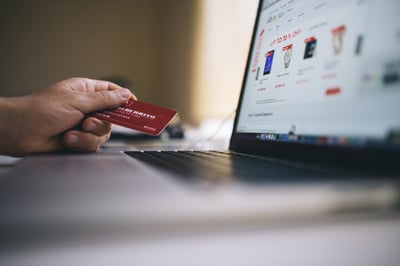October 30, 2019
.png?width=400&height=150&name=12%20(1).png) by Katarzyna Kwartnik / October 30, 2019
by Katarzyna Kwartnik / October 30, 2019
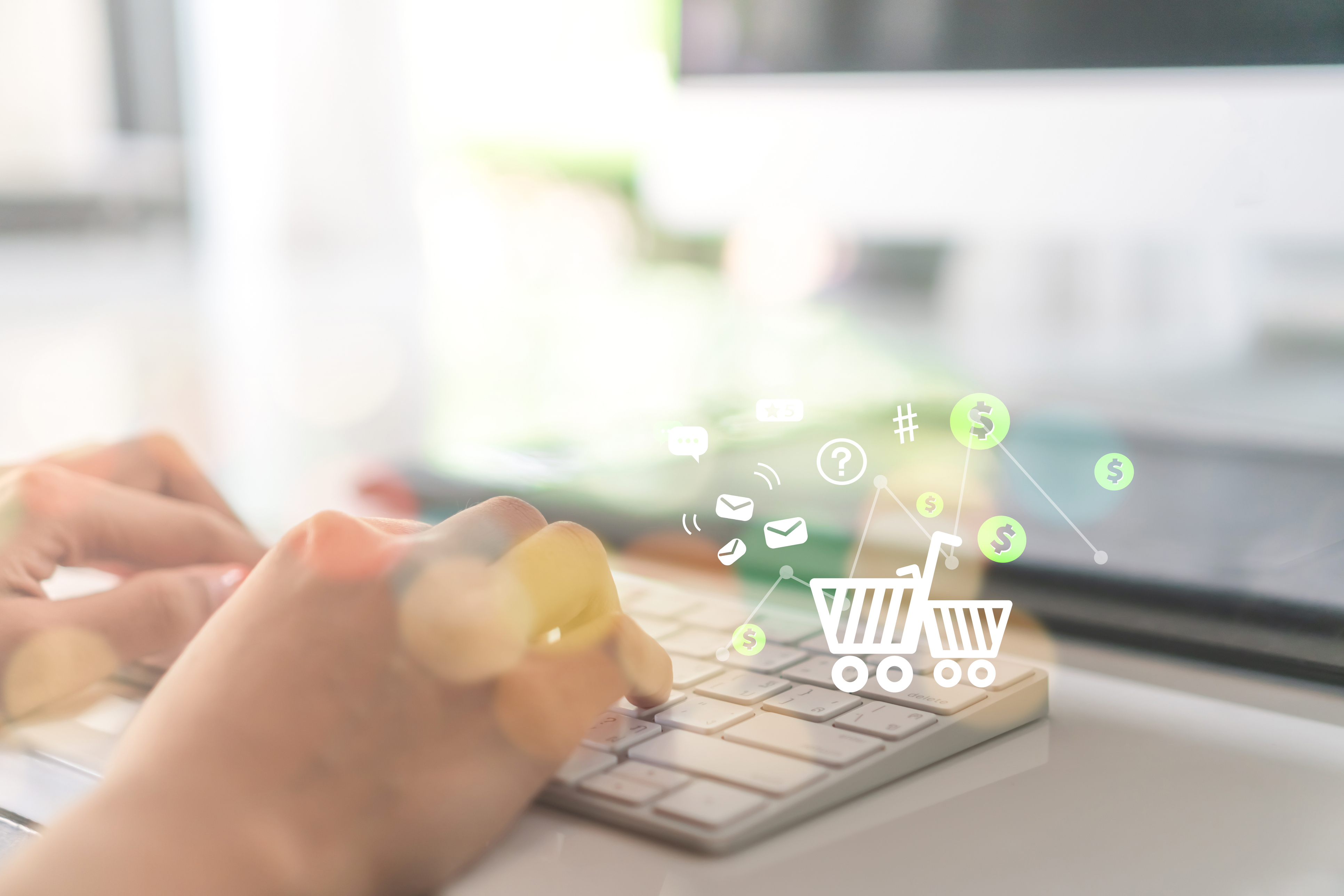
E-commerce is not only our present, but our everyday reality.
In fact, 51% of US consumers prefer to shop online and 96% of them have purchased something online at least once before. These numbers leave no space for doubt: e-commerce isn’t going anywhere. But for marketers, e-commerce is also a constant challenge.
So how can marketers overcome these challenges? Here are some solutions for problems related to customer communication, engagement, and conversions.
The following e-commerce challenges are something marketers deal with on a regular basis. Let’s dive deeper into what they are.
As of Q2 2018, only 2.86% of e-commerce visits converted into purchases. People come to your website. The number of unique visitors is impressive. You are happy because you chose the right acquisition channels. Unfortunately, the happiness ends when you check the conversion rate.
So what can you do to turn all these visitors into paying customers?
If you want a substantial amount of users to convert, you need to try out different channels. beyond simple email marketing. The channel that can bring similar results to newsletters is web push, but its click-through rate (CTR) can be five times higher.
The advantage of web push notifications is the fact that potential subscribers don’t need to provide any sensitive data like name or email address. For signup they just need to click on the “allow” button, letting you collect subscribers faster. What’s more, every delivered notification is automatically opened. Can you say the same about newsletter opt-ins?
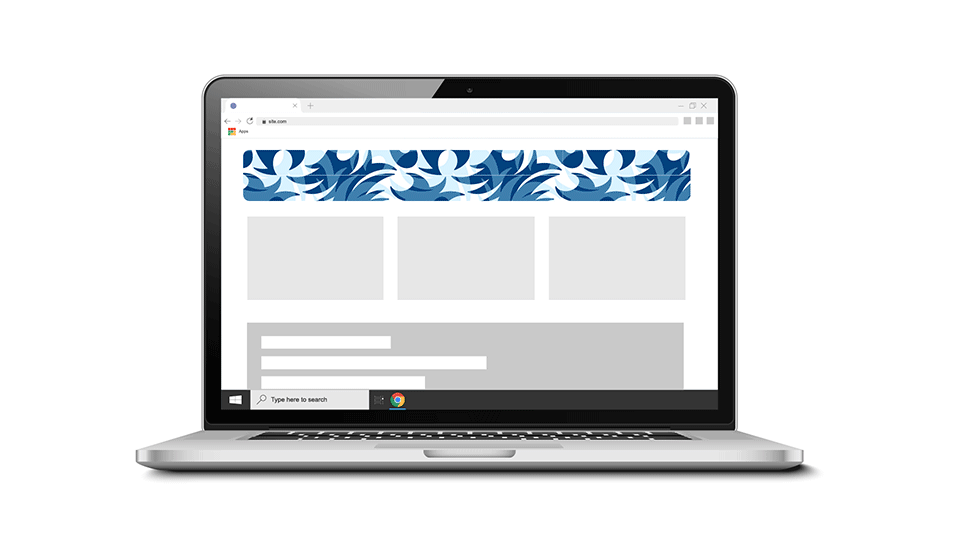
Having two subscriber bases (email and web push) gives you an opportunity to double your chances to reach and attract future clients. Don’t waste it.
Seventy-four percent of consumers feel frustrated when a message is not tailored to their needs. That’s why you shouldn’t only focus on building a large base and sending mass campaigns. Instead, track your users’ behavior and interests and divide them into segments to send personalized messages. Both email marketing and web push notification automation platforms allow you to do that.
In e-commerce, the most effective way of personalization is to send messages based on previously visited categories and products. It’s possible thanks to the integration with the product feed (XML).
Eighty-seven percent of online shoppers do research before actually making a purchase. What’s more, 96% of your website visitors are not ready to buy.
Solution? Retargeting. But how? Google and Facebook Ads – but you’re not here to read about obvious solutions.
With display ads, you won’t reach potential clients who use ad blocking software, which a third of all internet users use. So it’s smart to find an additional channel that will support your retargeting efforts. Retargeting and web push are ad blocker resistant and help you reach a completely new audience.

Integration with the product feed is also required in this scenario, so the web push platform can download product data automatically (photo, inventory, price, short name). A reminder notification about the last-seen product is sent automatically as soon as your subscriber enters your website again.
On average, 69% of e-commerce interactions end with cart abandonment. As many as 58.6% of online shoppers admit that in the last three months, they have abandoned their shopping cart because they simply check out different products and are not ready to buy.
So how do you take carts to the sales finish line?
Among the most common reasons for cart abandonment are price, hidden fees, shipping costs, extended shopping paths, and poor user experience (UX) and site navigation. Let’s go a little deeper into these issues.
In the era of easy price comparison, the customer will definitely check the cost of the product in several places before making a purchase. However, you should keep in mind that price is one of the factors determining the purchase but it is almost never the only one.
Hidden fees are those that show up only when the shopper views the cart. Be transparent from the moment someone enters your website – honesty will pay off.
If you can afford to do so, offer free shipping. If you cannot, offer free shipping above a certain amount of items or monetary value. This not only prevents the cart abandonment, but also encourages customers to make larger purchases.
The fewer steps on the way to purchase, the better. If something like obligatory registration exists in your store, give it up now. Have you heard of the three-click rule? It says that the customer should only be separated from what they want by three interactions.
If your potential clients don’t know what to do, they will simply leave. Tell them!
Want to know what you can send with web push notifications? How about...a quick reminder about products left in the cart. Or perhaps a discount or free shipping to encourage the customer to finish shopping. You can easily send them with web push notifications.
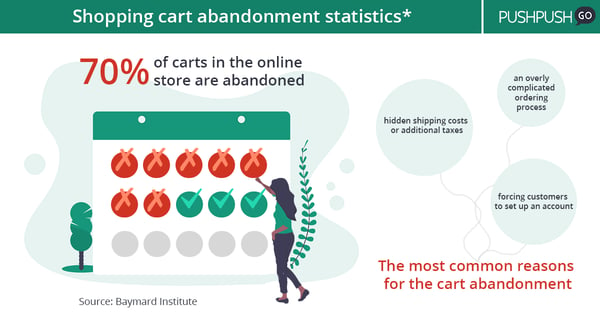
A web push platform detects an abandoned shopping cart on the website and analyzes:
| TIP: An average CTR for web push campaigns that save abandoned shopping carts is 16%. Read more about statistics on web push notifications. |
No matter which method of abandoned cart recovery you will choose, always remember to assign the tags to users before they leave your store!
Ninety-three percent of buyers are ready to give feedback if the company would just ask. The most common way of asking for an opinion is writing an email a couple of days after the purchase and asking to write a few words about the shopping experience. It sometimes works, but you could do much better.
Give them the opportunity to do so, sure, but make giving feedback as easy for them as possible. Let your clients express their opinion by choosing the appropriate (already written) option or simply clicking on the number that represents their level of satisfaction.
When it comes to collecting customer feedback email marketing is the first thing that comes to your mind. However, there are other options worth trying out, especially if mails don’t bring the expected results. And web push is among the best.
With notifications, you can create and send a simple survey that will help you determine client satisfaction.
It may look like this:
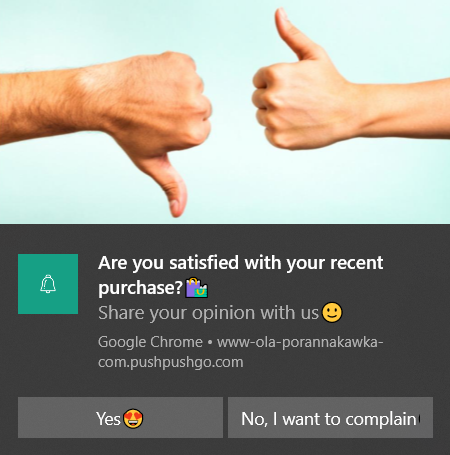
People being people, they are more willing to write a review when something went wrong rather than when they are satisfied. Even the negative opinions are something you want to see.
First off, they give you information about areas that need improvement. Secondly, negative voices make the positive ones wake up. When a bad opinion is published, the ambassadors of your/brand product will speak their mind. It’s just the motivation they need. Remember: 79 percent of consumers want to see companies respond to negative reviews.
Not everyone would like to make their feedback public. It doesn’t mean that it’s not valuable. That’s why you should enable your clients to give more via private channels. Set up a live chat feature on your site and make sure that the contact info is visible.
|
TIP: Don't forget to discover live chat software solutions to help you become more accessible to existing and potential customers! Don't let those sales walk out the virtual door. |
Some time ago you decided to run a blog. Your site may have gained a lot of organic traffic, but maybe you noticed that blog readers are not the users who buy.
Is this a reason to worry? Not necessarily. First of all, you have managed to reach a new audience with huge potential. Secondly, you boost your SEO KPIs. These two factors are a success already.
There is one more thing: users who search online for how-to articles, ratings, or reviews are at the consideration stage of the sales funnel. They simply are not ready to buy yet, but you are on a good path to making them buy in the future. So what can you do?
Internal links and product names may not be enough. Without a CTA, you can expect your bounce rate to be high. So don’t ever forget to place a clear and nice call to action every time you mention your products.
Encourage readers to subscribe to web push and newsletters. Offer them discounts for doing so. Sending emails or notifications with also help with sharing articles on topics that specific users were previously interested in and making them come back to your store.
Another thing you could do is to set up a pop-up or a top bar on your website and offer some extra material for an email address.
Analyze your visitor behavior closely. The fact that they haven’t spent money yet doesn’t mean that they haven’t contributed other value.
What you should consider to be a micro conversion?
|
Only 8% of buyers are repeat customers, and they bring about 40% of revenue to online stores. How do you not miss out on this chance?
Loyalty programs are an effective way to increase purchase frequency; they motivate customers to buy and keep them close to your brand.
Give your client points for every dollar spent in your store and offer them the possibility to exchange them for future purchases. Hopefully, they will repeat their purchase, in the worst case scenario your subscriber base will grow. Not so bad after all, is it?
What encourages people to spend money in a specific shop? The opportunity to save money or spend less. Offer your regular clients unique discounts and promotions – they will come back for more, you can be sure of that.
Send notifications and emails on a regular basis. Share the discounts mentioned above, special occasions, info about new collections or new blog posts. Set up marketing automation scenarios so the message will be sent automatically if the client hasn’t returned to your store in a certain time frame.

When different marketing messages are all around, relationships are what matters.
To learn more important e-commerce information, check out our statistics about e-commerce software and find the right solution for your company's needs, only on G2.
Katarzyna Kwartnik is a word enthusiast both in literature and marketing. Currently working at a Polish startup PushPushGo where she is responsible for developing and implementation of content marketing strategy.
Many businesses are looking for a way to sell more of their products or services in order to...
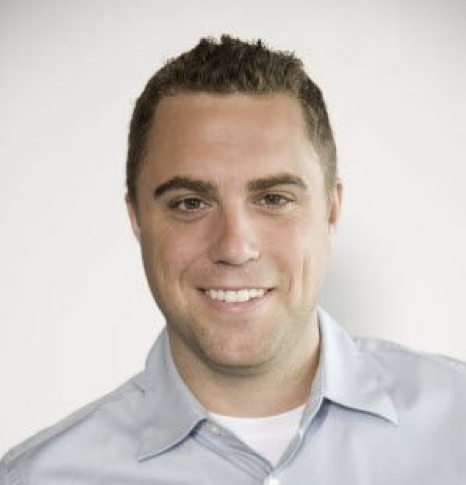 by Mark Thompson
by Mark Thompson
Even if you create the best products in the world, your e-commerce store will fail if you...
 by Mitt Ray
by Mitt Ray
If there’s one metric any company wants to increase, it’s customer lifetime value (CLV).
 by Mark Thompson
by Mark Thompson
Many businesses are looking for a way to sell more of their products or services in order to...
 by Mark Thompson
by Mark Thompson
Even if you create the best products in the world, your e-commerce store will fail if you...
 by Mitt Ray
by Mitt Ray


